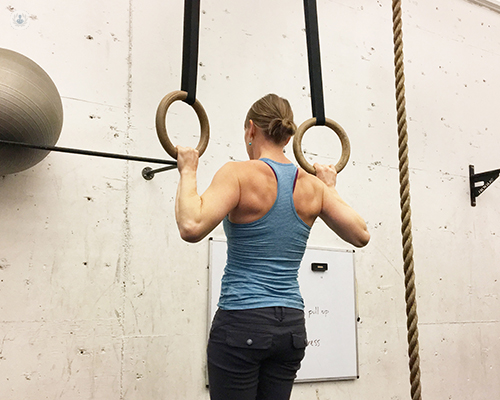

What is arthroscopic subacromial decompression?
Arthroscopic subacromial decompression is a type of shoulder operation that aims to treat shoulder impingement. Shoulder impingement is a very common cause of shoulder pain and results from when tendons and bones in the shoulder rub against each other on raising your arm. Subacromial decompression is a day case procedure, so you won't have to stay overnight in hospital, and the procedure takes about an hour. It is usually performed as keyhole surgery (minimally-invasive) and uses general anaesthesia.

Why is it done?
The operation aims to increase the space between your shoulder blade and the rotator cuff. Not having enough space can cause pain and restrict your movement when you try to raise your arm. Impingement also causes shoulder pain.
What does it involve?
This procedure is mostly done using minimally-invasive techniques, and as such it can be done as a day-case. General anaesthesia is required and the surgery usually takes about an hour. You might also have local anaesthesia in the shoulder nerves to ensure you do not feel pain during the procedure. Once anaesthetised, a number of small incisions are made around the shoulder. These are usually no bigger than 5mm in size and normally 2-3 are sufficient. Through these incisions, the surgeon inserts a thin, flexible tube called an arthroscope into the subacromial space of the shoulder joint. The camera on the end of the arthroscope shows its images on a monitor which the surgeon uses to guide their surgical instruments which are inserted through the other incisions. Using these instruments, the surgeon repairs any damaged tendons and reshapes the shoulder blade. Once complete, the instruments are removed and the incisions are closed with stitches.
How do you prepare for arthroscopic subacromial decompression?
One of the most important preparatory measures to take is to prepare your home for your recovery, as well as arrangements for getting you home after surgery. This is nearly always a day case procedure meaning you return home the same day, therefore, you will need a friend or family member to pick you up and take you home. It is also wise to have someone stay with you for the first day following surgery. As the procedure uses general anaesthesia, you will have to fast for a duration before the operation.
Aftercare:
Pain relief can be given whilst the anaesthesia wears off immediately following surgery and you can return home the same day. You may have to keep your arm in a sling for a few days. A full recovery takes up to four months. During this time you may need over-the-counter painkillers to manage pain. You should also have physiotherapy during this time to help improve shoulder mobility and stability. Patients who do not do manual labour for work can return to work within a few days following surgery.
Alternatives to this treatment:
Some people suffering from shoulder impingement and pain won’t require this form of intervention as they will see improvements from the following treatment options:
- Physiotherapy
- Rest
- Steroid joint injections
- Non-steroidal anti-inflammatory medication
